A Bright, Sunny, Lesser-Known Plant for the Garden
I wrote earlier this month about the extreme cold temperatures that we had been dealing with. Well, we are now experiencing warmer then normal temperatures with highs hitting about 78 degrees F. While I do love this weather, I am NOT liking how my allergies have flared up. I am writing this with swollen, itchy and watery eyes……definitely not a pretty sight. So, I will stay indoors, hoping that my allergy medication decides to kick in sometime soon 😉
On another note, I have enjoyed sharing with you some of the wonderful plants that are ‘lesser-known’ in the garden.
Basically, lesser-known plants are those that are underused in the garden. I think the reason is, is that most people are so used to using the more common landscape plants, that they do not know what other alternatives are out there.
So, if you are tired of your front landscape, looking like everyone else, then you should definitely try out some of these plants in your landscape. So far, we have showcased Valentine, Chaparral Sage and Coral Fountain.
Today’s star is one that I have used quite a bit in the past 10 years. Although I have seen it used in commercial plantings, it is still not seen too often in residential landscapes, which is a shame.
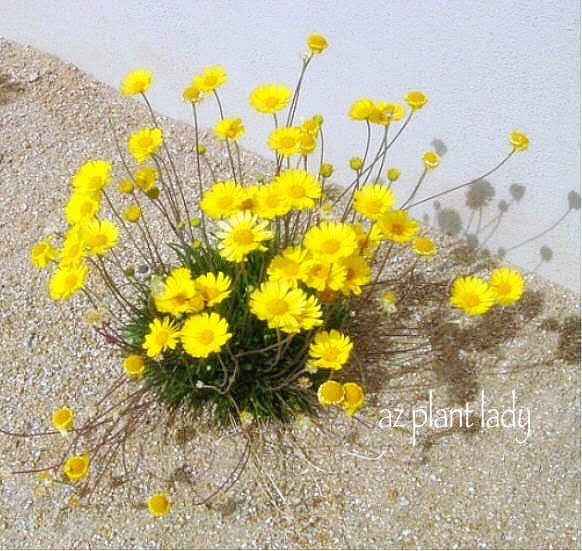
Angelita Daisy (Tetraneuris acaulis formerly Hymenoxys acualis), is a must have for the garden. I love the bright, daisy-like flowers and the little grass-like leaves.
This pretty little perennial is native to the high desert areas of the United States, but also thrives in the low desert as well.
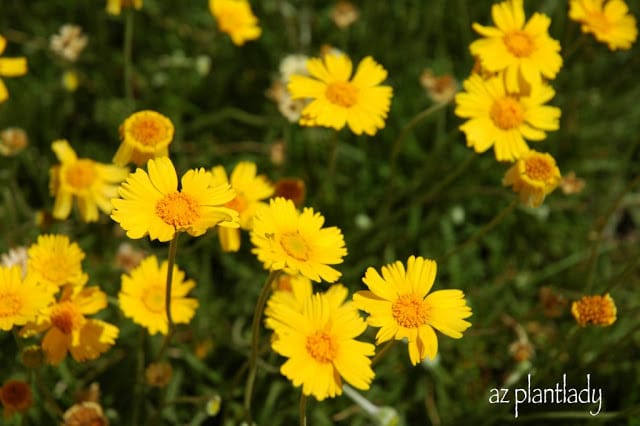
They look great when massed together. I normally use 3 planted about 1 ft. apart. Alternatively, they can be planted alone as well and look great when placed next to boulders or in containers.
Angelita Daisies make a great alternative for Gold Lantana and does not suffer frost damage in both the low and high deserts.
**In fact, Angelita Daisy is hardy to -20 degrees F. So it is perfect for those who live in colder climates as well!
Here are some other reasons to use this wonderful little perennial in your garden:
Thrives in full sun.
Is not picky about soil, as long as it is well-drained.
Does not require fertilizer.
Is fairly low-maintenance. Occasional deadheading of flowers is all.
In low desert areas, Angelita Daisy blooms off an on all year long, with the strongest bloom occurring in spring.
It’s mature size of 1 ft. high and wide, makes it perfect for any size garden.
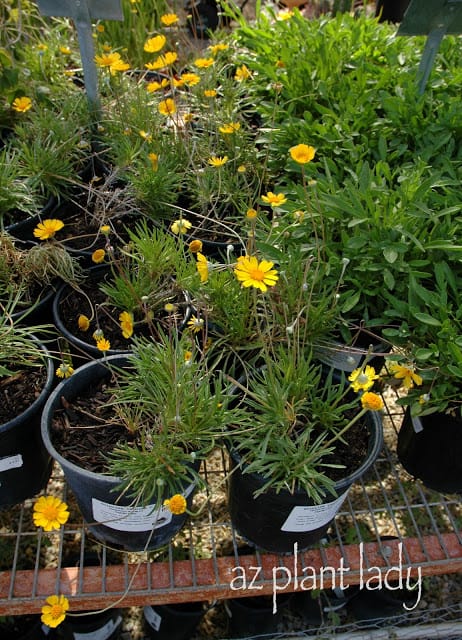
Angelita Daisies are not all that impressive when viewed in their containers, but as soon as they are planted and their roots have a chance to grow, you will be rewarded with a showy display of yellow flowers.
As the plants age, you may prune them back if needed and they do spread by seed.
I think I will use some in my summer containers this year.
How about you?
Where will you use Angelita Daisy in your garden?

 Noelle Johnson, aka, 'AZ Plant Lady' is a author, horticulturist, and landscape consultant who helps people learn how to create, grow, and maintain beautiful desert gardens that thrive in a hot, dry climate. She does this through her consulting services, her online class Desert Gardening 101, and her monthly membership club, Through the Garden Gate. As she likes to tell desert-dwellers, "Gardening in the desert isn't hard, but it is different."
Noelle Johnson, aka, 'AZ Plant Lady' is a author, horticulturist, and landscape consultant who helps people learn how to create, grow, and maintain beautiful desert gardens that thrive in a hot, dry climate. She does this through her consulting services, her online class Desert Gardening 101, and her monthly membership club, Through the Garden Gate. As she likes to tell desert-dwellers, "Gardening in the desert isn't hard, but it is different."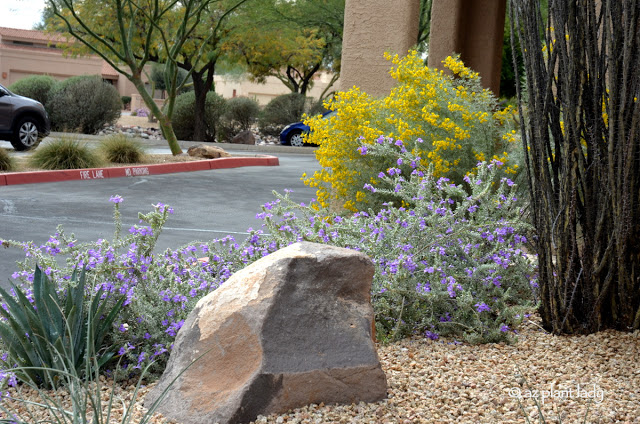
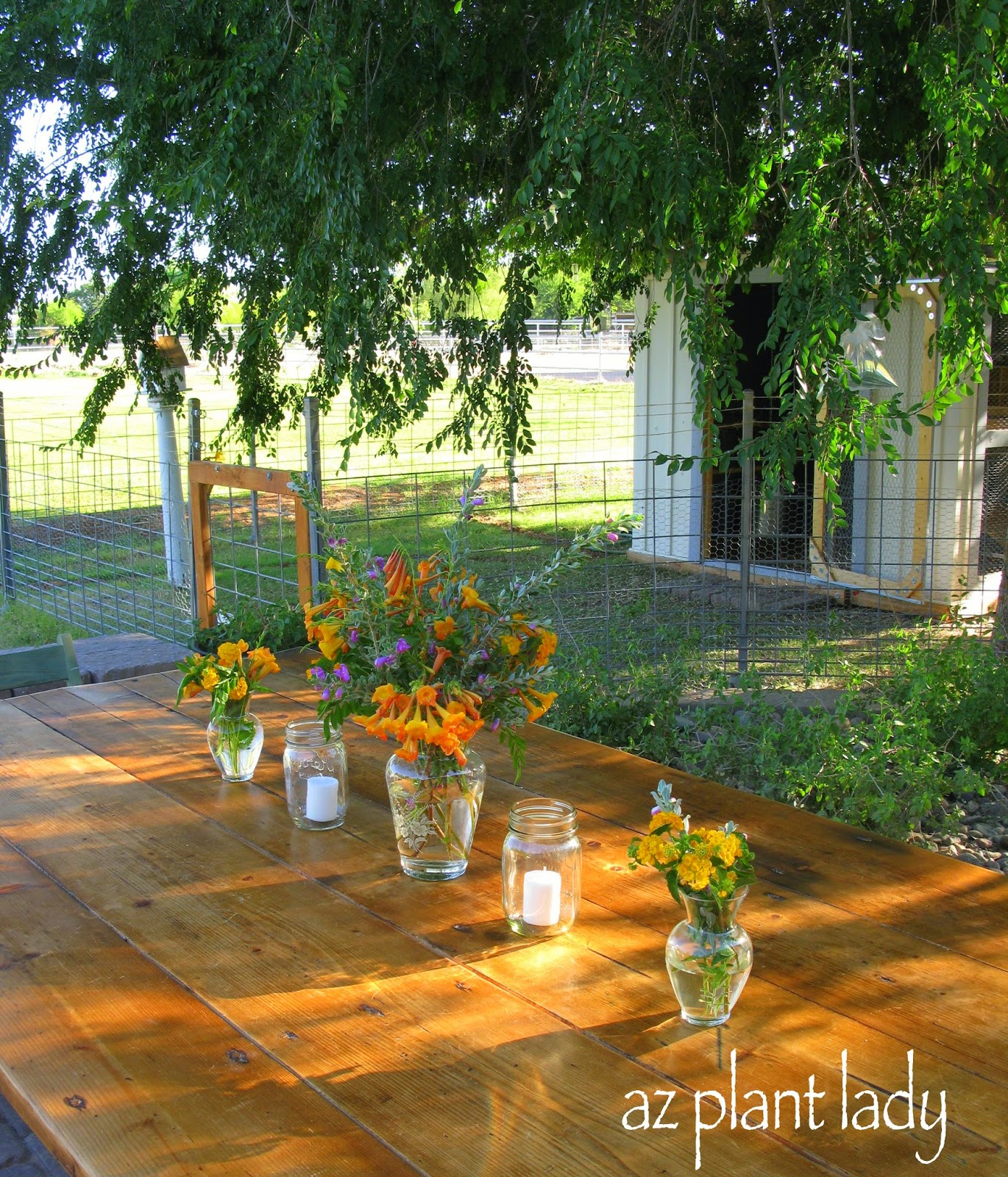
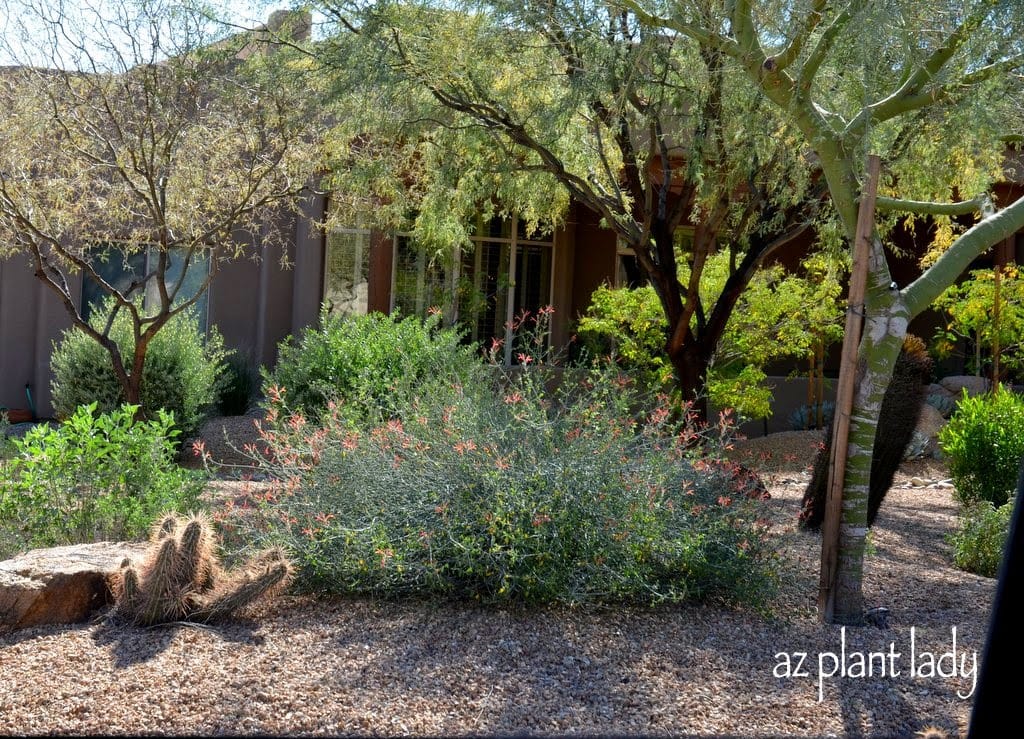
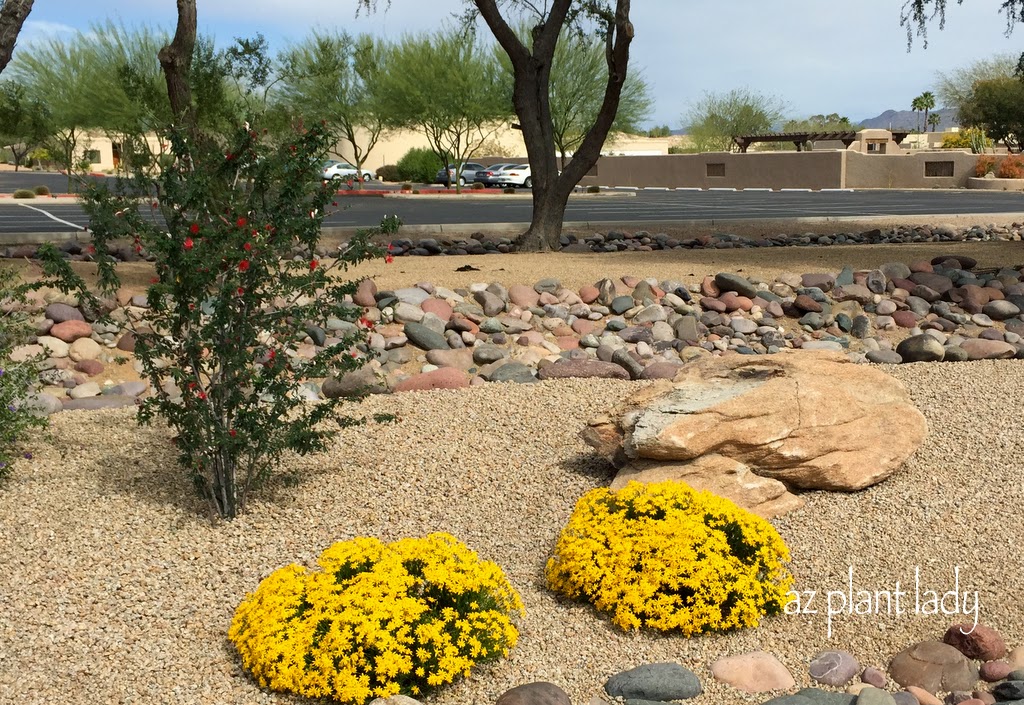
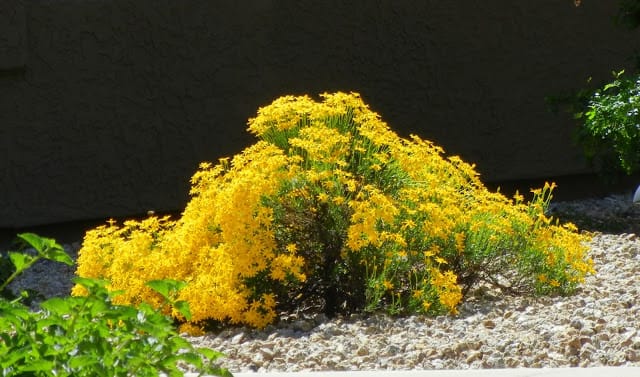









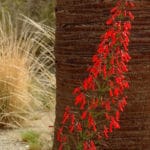

Would we be able to grow them in Dorset, do you think? The summers are hot (not desert hot but hot, none the less). However, we are having more rain than we used to – and there is some salt in the air from the sea. What do you think?
Esther
What a cheerful flower. Very pretty. I love the Valentine you displayed earlier also. I just never imagined so many beautiful flowers in the desert until I started reading your postings. Plants are just so resourceful in adapting to any environment I have learned now from so many blogs from around the world and that amazes me at times.
Very pretty…Is the Coral Fountain the same as the Firecracker? I do hope your allergies ease up…
Angelita Daisy is one of my favorites for sunny spots in cool or hot climates; yes, it needs more use in residential gardens.
Had a client kill it from overwatering, but once they followed my every-2 week irrigation during summer establishment, it started thriving and reseeding!
A very pretty flower, and it caught my attention when you compared it to lantana. I suppose, being a desert plant, it can do without summer irrigation too? It is nice to have alternatives to the ubiquitous lantana…
Hello,
Thank you all for your comments.
Esther, I think it may be worth trying in your English garden. I am a big believer that you never know how a plant will do until you try it out. I do recommend well-drained soil and full sun.
Darla,
Although Coral Fountain does look similar to Firecracker Penstemon they are not the same. Firecracker Penstemon is a desert native and does not need fertilizer or as much water 🙂
Hello Masha,
In the desert, Angelita Daisy does require supplemental irrigation, especially in the summer months. In the high deserts, they will probably do well with water every 10 – 14 days. In the low desert areas, they will require water every 5 – 7 days. You will have to experiment for yourself and see how much water to give them for your garden and climate.
Thanks for your questions!
Noelle
This is definitely one of my favorites. It's cold hardy up here in Utah, requires absolutely zero irrigation once established, looks beautiful, and has a long bloom period. Thanks for reminding me and sharing this plant!
This is a pretty little plant; its blooms remind me of some of the coreopsis. But the best part is–I could grow these in MY garden! I'll have to look for these when the nurseries get their stock in. It's nice to see the photos here of the mature plant; as you say, you can't tell by the potted plants in the garden center what they're eventually going to look like. Now if I could only grow one of your Valentine's shrubs here as well!
Glad to hear it's warming up for you; we're supposed to get near 60 by Friday which is a heat wave for us in February.
thank you for posting what this plant is! I see it in the edging at my gym and I LOVE it! SO going to buy some, especially since it's hardy up to -20! So tired of my plants dying here when it gets cold!
Pat and I are always looking for new flowers for our sunny front yard. Thanks for the post. I hope all is well with you and your family. jim
Yes Noelle, those plants look like weeds but they are beautiful. The bright yellow flowers will enliven a grassy green lawn.
At first glance, I was thinking it was Anthemis, which grows all over my garden, sometimes too much!
This Angelite Daisy looks like a plant that might be easier to control and still add that sunny yellow that coordinates so well with my other plants.
Hope you are well, and enjoying your more " normal" weather down there in AZ!
They are bright and sunny will look great in any garden or as low borders.
Hi Noelle,
We have loved our Angelita daisies. Unfortunately we have received a lot of rain this winter and they are starting to be unhappy. I can’t seem to find much help in saving these. I am thinking about taking them out and using some of the healthy sections to restart. I would love your thoughts and experience in this if you have any.
Thanks,
Shawnda
Hello Shawnda,
As angelita daisies age, they can be woody and somewhat straggly. This happens with many perennials as they age as well as when they receive too much water. I would go ahead and take out a few healthy sections and replant them. With the rest, cut them back to 2 inches and see if this helps to rejuvenate them.
Let me know how they do. 🙂